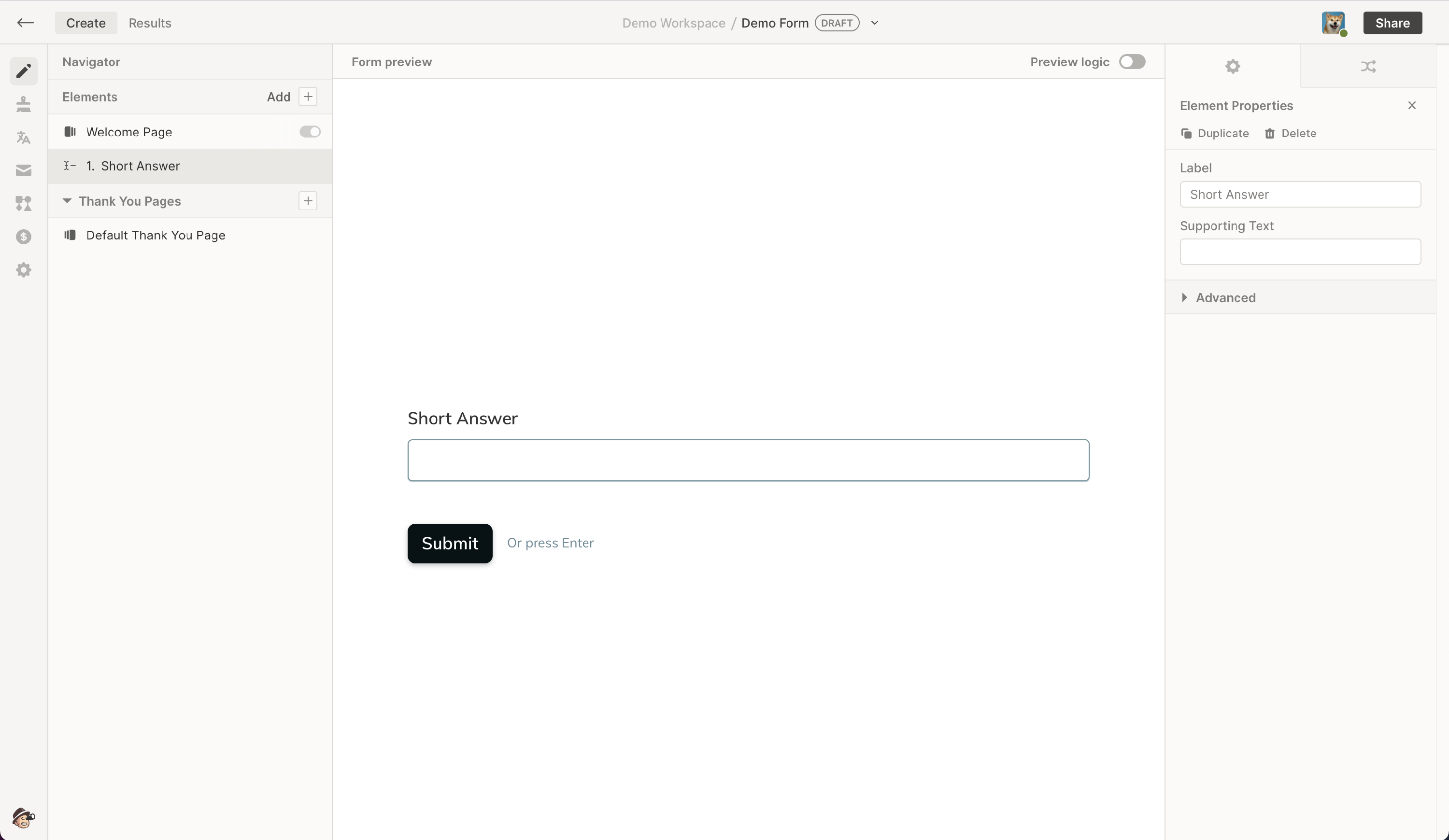Building Your Form
The QuestionScout form builder is a tool that allows you to create forms on the fly. In this article, we'll be taking you through the form builder and showing you how to get started!
The form builder interface

Before you've added any fields to your form, the builder looks like this. It might look a bit barren, but that's because there are no other elements added yet. To start adding elements, simply click the "Add" button, which is highlighted by default when you create a new form. Clicking the Add button will open up the element selector, where you can add a range of questions & structural elements.

You can click, or hold to drag an element from the elements picker, straight into the elements navigator. This will add the field to your form

In this example, we've added a Short Answer field to our form. After adding the field to our form, the sidebar will pop up with a list of options for that specific field. We'll break down the options for the short answer field here:
Field Format is validating the input in the field. This means that if you select "Email" as the field format and it's required, the respondent will not be able to submit if they did not input an email.
Field Title is the label of the field, in this case, "Short Answer".
Placeholder Content is the text that is being displayed in the field, but that doesn't have to be erased.
Pre-filled Content is content that is already put into the field. The respondent will have to erase this manually if they were to want to remove it.
Supporting Text is being displayed underneath the field to support the question you're asking.
Required makes the field required in order to submit.
Read-Only prevents the respondent from submitting this field.
Hidden hides the field from the respondent.
Every form field has its own list of options, so take your time to look at all of them when actually using them.
After building your form, you're probably ready to start adding styling to your form or to apply Logic to make your form more intuitive to the respondent. We've written some articles on that, too!
